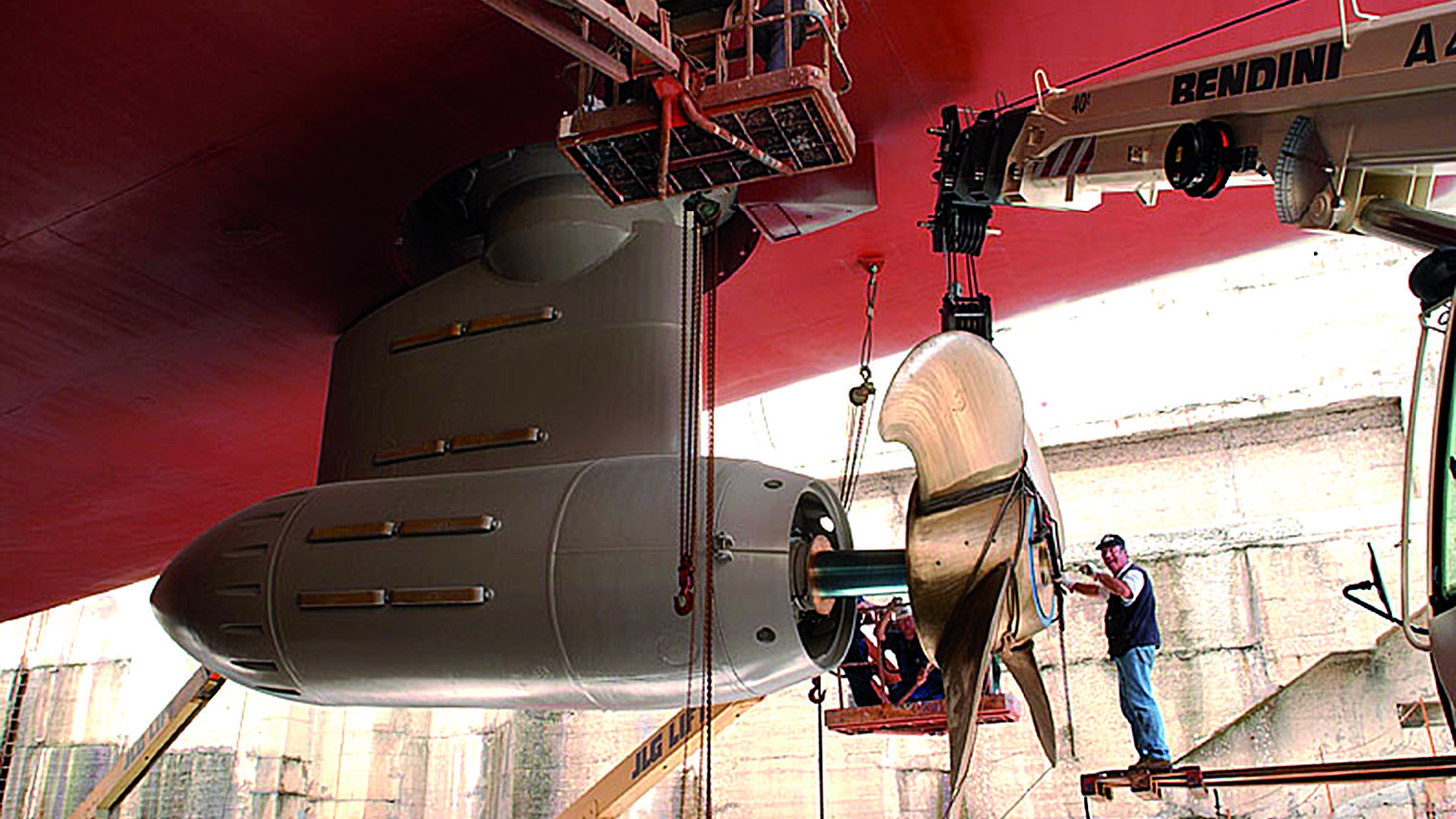

Electric podded propulsor
Azymuthing electric propulsion unit with the motor located inside the underwater housing (pod) attached to the hull. Electric podded propulsors relocate more space in the hull by eliminating the inboard motors, shaftlines, steering gear and stern thrusters as in traditional propulsion systems. The concept was pioneered by Kvaerner Masa yard that developed the first Azipod units.
Although all the systems share a common configuration – an electric motor housed in a fully rotatable pod and coupled to a propeller – the designers have adopted different detail solutions, selecting either: synchronous or asynchronous motors; brushless or permanent excitation; Cyclo, Synchro or PWM converters; and cooling system based on air, seawater/convection or a combination of these modes. The propulsor today is an integration of the propulsion motor, shaftline and propeller; the next step will be an integration of the supply transformer, converter and filtering.
Since the motor is the central element of the propulsion chain, a simple and reliable component is desirable, requirements that promote the permanently excited motor and the AC induction motor. Both these motor types along with PWM converters capable of increased voltage and power ratings create an excellent electric drive system. The cycloconverter can perhaps maintain its market share in larger drives but it seems that the podded propulsor does not favour the synchroconverter.
Direct seawater cooling releases the top of the propulsor from air ducts, fans and heat exchangers for other auxiliaries. The work executed by the propulsor supplier can thus be extended and the work required at the yard is reduced. Cooling is an area calling for further development to find solutions for a non-air cooled rotor for an AC induction motor and to improve convection from the stator to the seawater.
